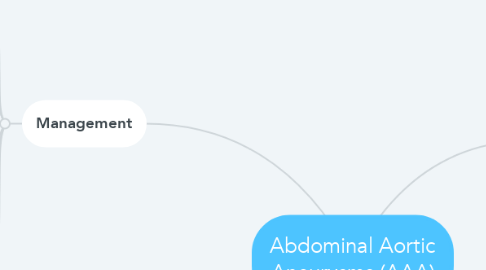Abdominal Aortic Aneurysms (AAA)
por brittany b


1. Management
1.1. For small AAA's, get ultrasounds every 6-12 months
1.2. Daily exercise
1.3. Larger AAA's may need to be removed by a vascular surgeon
1.4. Endovascular aneurysm repair (EVAR) is a less invasive treatment (instead of surgery)
1.5. Low sodium diet
1.6. Maintain a healthy weight
1.7. Have blood pressure & cholesterol checked regularly
1.8. Larger AAA's may need to be removed by a vascular surgeon
2. Complications
2.1. Ruptures-
2.2. Signs of rupture: fast pulse, low blood pressure, sudden, intense and persistent abdominal or back pain, which can be described as a tearing sensation
3. Clinical Symptoms
3.1. Sudden, severe abdominal or back pain
3.2. Pain, discoloration, sores on feet and toes
3.3. Normally do not cause any symptoms
4. Diagnosis
4.1. Abdominal ultrasound
4.2. Computed tomographic angiography (CTA)
5. Risk Factors
5.1. Tobacco use
5.1.1. Gender (male dominant)
5.1.1.1. Age (normally 65+)
5.1.1.1.1. Caucasian
